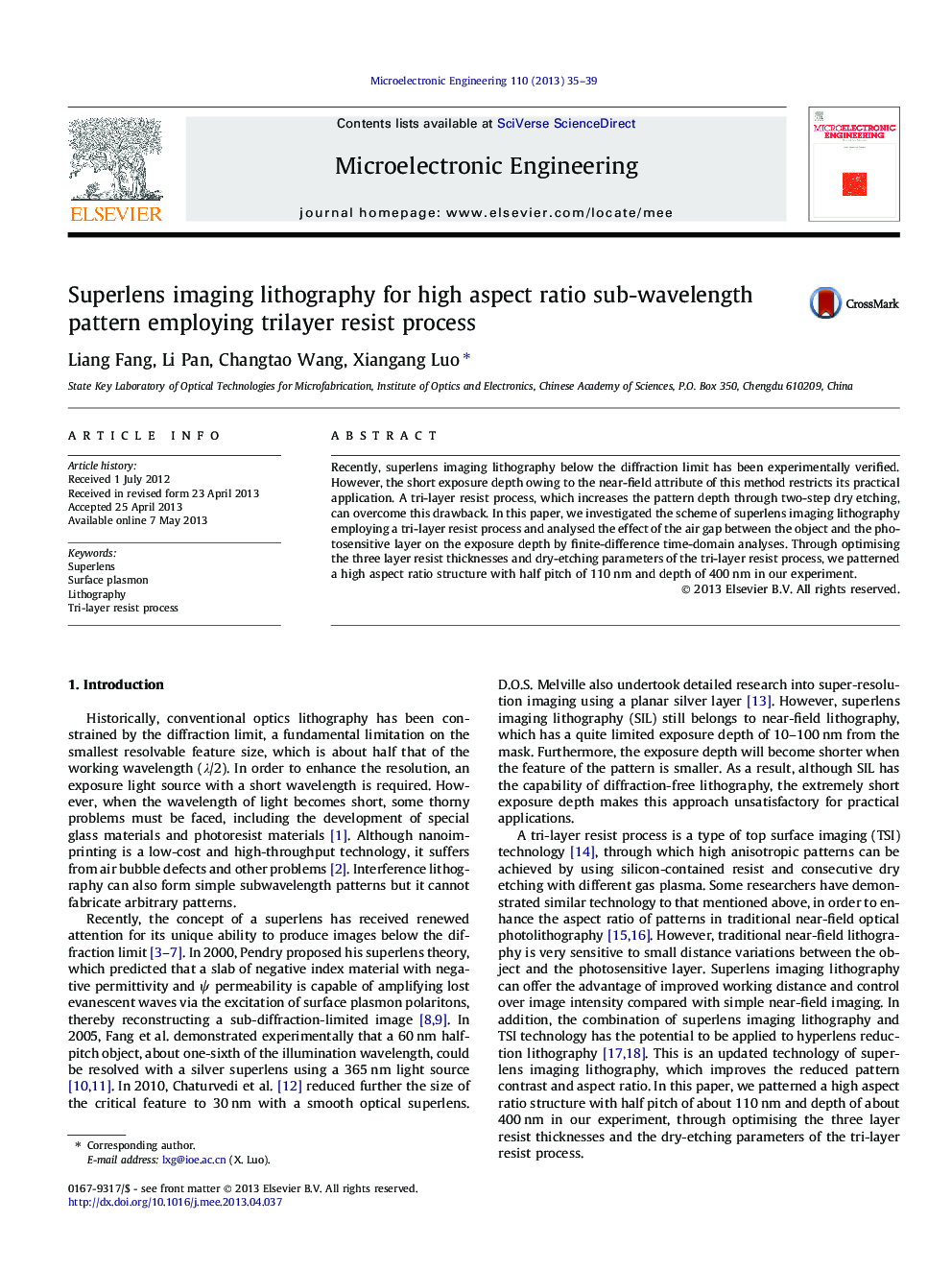| Article ID | Journal | Published Year | Pages | File Type |
|---|---|---|---|---|
| 544229 | Microelectronic Engineering | 2013 | 5 Pages |
•A scheme of superlens imaging lithography employing tri-layer resist process was investigated.•The effect of air gap between the object and the photosensitive layer on the exposure depth was analysed.•The resist thicknesses and dry-etching parameters of the tri-layer resist process were optimised.•A high aspect ratio structure with half pitch of 110 nm and depth of 400 nm was achieved.
Recently, superlens imaging lithography below the diffraction limit has been experimentally verified. However, the short exposure depth owing to the near-field attribute of this method restricts its practical application. A tri-layer resist process, which increases the pattern depth through two-step dry etching, can overcome this drawback. In this paper, we investigated the scheme of superlens imaging lithography employing a tri-layer resist process and analysed the effect of the air gap between the object and the photosensitive layer on the exposure depth by finite-difference time-domain analyses. Through optimising the three layer resist thicknesses and dry-etching parameters of the tri-layer resist process, we patterned a high aspect ratio structure with half pitch of 110 nm and depth of 400 nm in our experiment.
Graphical abstractFigure optionsDownload full-size imageDownload as PowerPoint slide
